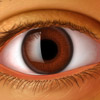- Introduction to physical exercise and eye health
- Eye disorders associated with lack of exercise
- Evidence supporting the role of exercise in protecting eye health
Introduction to physical exercise and eye health

There is also evidence that exercise protects against cardiovascular disease (CVD). CVD shares many common risk factors with age related macular degeneration (the leading cause of blindness in Australia) and obesity (which is associated with greater severity of vision loss).
Eye disorders associated with lack of exercise
The limited available evidence suggests that regular exercise protects against cataract and age related macular degeneration, two of the leading causes of vision loss in Australia.
Due to the other positive effects (e.g. improved cardiovascular health, weight loss) of exercise, it may also have a non-direct protective effect in relation to other eye diseases (e.g. diabetic retinopathy, a disease which occurs in diabetes, for which metabolic abnormalities and obesity are risk factors).
Age related macular degeneration
Age related macular degeneration or maculopathy is an acquired eye disorder. It has no cure and is the most prominent cause of age related blindness in Australia. Age related macular degeneration is a neurodegenerative condition, affecting the central retina or the section of the eye which enables the clear, sharp vision necessary for reading, driving and other such tasks.
While eyesight naturally deteriorates as an individual ages, the exposure which can cause eyesight to deteriorate more rapidly are similar to the exposure which increase the likelihood of cardiovascular disease. This suggests that exercise and body mass index may also play an important role in the progression of age related macular degeneration.
This information will be collected for educational purposes, however it will remain anonymous.
 |
For more information on age related macular degeneration, including the effect of smoking, exercise and nutrition on eyes, as well as some useful animations and tips to keep eyes healthy, see Macular Degeneration. |
Cataract (cloudiness of the lens of the eye) is a condition characterised by the lens of the eye becoming increasingly opaque. It can lead to impaired eyesight or blindness. Globally, cataract is a major cause of vision impairment, which mainly affects elderly people. In Australia 160,000 cataracts are treated each year. The Blue Mountains Eye Study, conducted in NSW, Australia, found that the annual incidence of cataracts was 0.3% amongst individuals aged 49-54, 1.7% for those aged 55-64 years, 7.9% in the 65-74 year age group and 17.4% in individuals aged more than 75 years.
While further research is needed to fully understand how exercise protects against cataracts, it is most likely due to the effect exercise has on high density lipoprotein (good’ cholesterol) concentrations. High density lipoprotein concentrations have been shown to increase in response to vigorous exercise and have both anti-inflammatory and anti-oxidative effects. Both inflammation and oxidation are thought to be involved in the development of cataracts.
 |
For more information on cataracts, including the effect of smoking, exercise and nutrition on eyes, as well as some useful animations and tips to keep eyes healthy, see Cataracts. |
Evidence supporting the role of exercise in protecting eye health

In relation to the role of moderate exercise, a number of studies have reported associations between levels of physical activity and the incidence of age related macular degeneration and cataract. One study reported that individuals who were free of eye disease were significantly more likely to report high levels of physical activity compared to individuals with age-related macular degeneration.
Another large study in which participants underwent eye examinations for a 15 year period, reported that participants who exercised for 30 minutes or more at least three times a week were 70% less likely to develop age related macular degeneration.
A case control study which compared physical activity level and lenses of cataract patients to cataract-free individuals, reported that individuals with low levels of physical activity were up to seven times more likely to develop cataract than those with high levels of physical activity.
Two recently published studies have also provided evidence that regular vigorous exercise protects against both cataract and age related macular degeneration. The studies, conducted amongst a group of regular joggers, found that joggers who ran for less than two kilometres per day were 19% more likely to experience age related macular degeneration than those who ran 2-4 kilometres per day, and 42% more likely to develop the condition than those who ran more than four kilometres per day. The author of the study reported that the risk of age related macular degeneration decreased by 10% for every one kilometre of jogging per day.
Further analysis of data from that group of joggers in relation to cataract incidence demonstrated that men who jogged for > 64 km per week were 35% less likely to develop cataract than those who ran for >16km per week. Greater fitness (measured by time taken to run a mile) was associated with a 50% decreased risk of cataract in men. No associations between levels of physical activity and cataract in women were reported.
More information
 |
For more information on fitness and exercise, including stretches, types of exercise, exercise recovery and exercise with health conditions, as well as some useful videos, see Fitness. |
References
- Williams PT. Prospective study of incident age-related macular degeneration in relation to vigorous physical activity during a 7-year follow-up. Invest Ophthalmol Vis Sci. 2009; 50(1): 101-6.
- Chiu CJ, Milton RC, Gensler G, Taylor A. Association between dietary glycemic index and age-related macular degeneration in nondiabetic participants in the Age-Related Eye Disease Study. Am J Clin Nutr. 2007; 86(1): 180-8.
- Seddon JM, Cote J, Davis N, Rosner B. Progression of age-related macular degeneration: Association with body mass index, waist circumference, and waist-hip ratio. Arch Ophthalmol. 2003; 121(6): 785-92.
- Cancer Council Australia, Eye Research Australia. Position statement: Eye protection from ultraviolet radiation [online]. 31 August 2006 [cited 1 April 2009]. Available from URL: http://www.cancer.org.au/ file/ policypublications/ pseyeprotectionaug06.pdf
- World Health Organization. Global disease burden from solar ultraviolet radiation. 2006 [cited 1 April 2009]. Available from URL: http://www.who.int/ mediacentre/ factsheets/ fs305/ en/ index.html
- Panchapakesan J, Mitchell P, Tumuluri K, Rochtchina E, Foran S, Cumming RG. Five year incidence of cataract surgery: The Blue Mountains Eye Study. Br J Ophthalmol. 2003; 87(2): 168-72.
- Williams PT. Prospective epidemiological cohort study of reduced risk for incident cataract with vigorous physical activity and cardiorespiratory fitness during a 7-year follow-up. Invest Ophthalmol Vis Sci. 2009; 50(1): 95-100.
- Risk factors for neovascular age-related macular degeneration. Arch Ophthalmol. 1992; 110(12): 1701-8.
- Knudtson MD, Klein R, Klein BE. Physical activity and the 15-year cumulative incidence of age-related macular degeneration: The Beaver Dam Eye Study. Br J Ophthalmol. 2006; 90(12): 1461-3.
- Paunksnis A, Kusleika S, Kusleikaite M. The relationship of the intensity of lens opacity with physical activity. Medicina (Kaunas). 2006; 42(9): 738-43.
All content and media on the HealthEngine Blog is created and published online for informational purposes only. It is not intended to be a substitute for professional medical advice and should not be relied on as health or personal advice. Always seek the guidance of your doctor or other qualified health professional with any questions you may have regarding your health or a medical condition. Never disregard the advice of a medical professional, or delay in seeking it because of something you have read on this Website. If you think you may have a medical emergency, call your doctor, go to the nearest hospital emergency department, or call the emergency services immediately.







